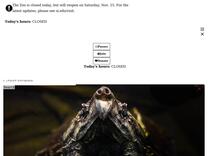Cheetah Cubdate #7: The Cubs Receive Their Names | Smithsonian’s National Zoo and Conservation Biology Institute https://nationalzoo.si.edu/center-species-survival/news/cheetah-cubdate-7-cubs-receive-their-names
Meet Amabala, Jabari, Hasani and Erindi! Now that the Smithsonian Conservation Biology Institute’s cheetah cubs have names (thanks to your votes) keepers have bestowed them upon the cubs.
brother “Base-of-Tail” received the name Erindi, which is a protected reserve in Namibia

